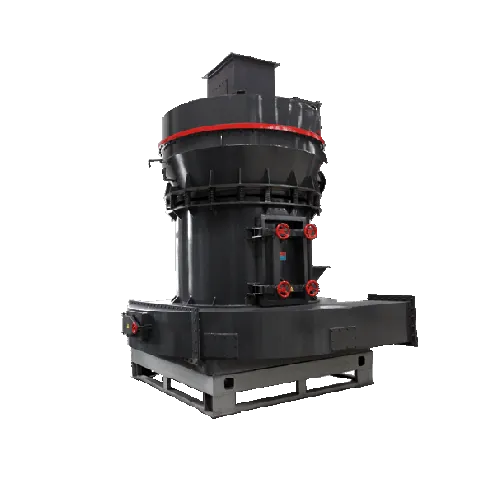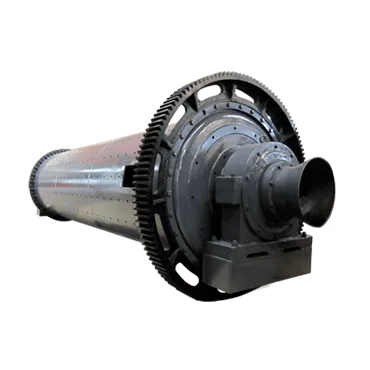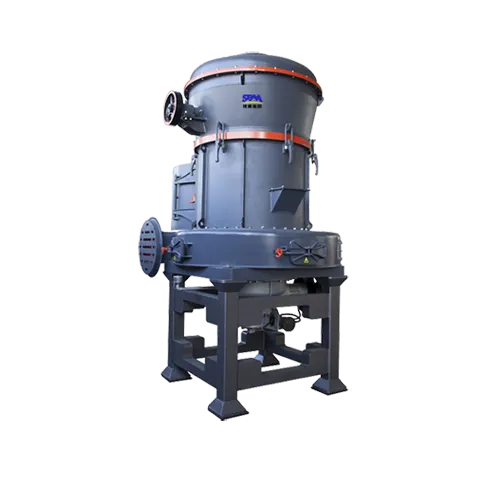Summary:The chemical composition of dolomite is CaMg(CO3)2, and the crystal is a carbonate mineral of the trigonal system. The crystal structure of dolomite is similar
The chemical composition of dolomite is CaMg(CO3)2, and the crystal is a carbonate mineral of the trigonal system. The crystal structure of dolomite is similar to calcite. Pure dolomite is white, sometimes gray-green, gray-yellow, pink and other colors due to other elements and impurities, and has a vitreous luster. The three groups of rhombohedrons are completely cleaved and brittle. Mohs hardness 3.5-4, specific gravity 2.8-2.9. Mineral powder reacts slowly in cold dilute hydrochloric acid.
Dolomite is sorted, crushed and ground into 325-2000 mesh to become dolomite powder. With the scale and application requirements of the dolomite powder industry, the traditional small-scale, multi-equipment extensive processing mode can no longer meet the market demand. Therefore, the use of new It is imperative to improve the processing scale and technical level of the company with advanced powder technology equipment. The LUM series ultra-fine vertical mill is a crushing, drying, grading, transportation, secondary powder selection, and finished product developed for many years. The integrated pulverizer with six functions including packaging can effectively increase the added value of dolomite products, and the output of the same product LUM series ultra-fine vertical pulverizer can be increased by 30%.

The dolomite powder processed by the ultra-fine vertical mill can be added to natural rubber and synthetic rubber, and its rubber properties are basically the same as that of adding light calcium powder, but the cost is lower than that of light calcium powder. The use of dolomite to produce general-purpose calcium-magnesium powder for rubber, as a new type of additive and colorant, can partially or completely replace light calcium powder. The surface-modified dolomite powder can greatly increase the reinforcing properties of rubber products. The modified dolomite powder is coated with a surface modifier and then used as a filler. Commonly used surface modifiers are stearic acid or stearic acid ester, titanate, zirconium aluminate, mixed silane coupling agent, etc. The purpose of modification is to change the surface alkalinity of dolomite powder, overcome the bonding performance between filler and rubber, reduce shrinkage and internal stress, prevent crack propagation, and improve the processing performance of product strength.
1. Glass Products
Dolomite and limestone are the third largest components in glass raw materials after silica sand and soda powder. In the production of bottle and can glass, soda powder is the most expensive component. Adding limestone can partially replace soda powder, but it will have adverse effects. The introduction of magnesium oxide into dolomite can further reduce costs. Dolomite can also provide calcium oxide in the glass industry, adding soda ash-grey-silica system to act as a flux. In addition, dolomite can also reduce glass aging, prevent chemical corrosion caused by atmospheric or moisture, improve the plasticity of stained glass, and increase glass strength. Adding a certain amount of dolomite powder in the manufacture of glass can effectively reduce the high temperature viscosity of the glass and improve the chemical stability and mechanical strength of the product. Practice also shows that the introduction of dolomite powder in the preparation of low-temperature ceramics and float glass ingredients can significantly save energy.
2. Metallurgical Industry
Magnesium smelting industry: Dolomite with a raw ore particle size of 30-120mm is an important raw material for the production of metallic magnesium. Its smelting methods are mainly divided into two categories, namely electrolysis and silicothermic reduction.
Refractory: Dolomite, as one of the important raw materials of basic refractories, is second only to magnesite in importance. It is mainly used for steelmaking converter lining, open hearth furnace, electric furnace wall, and secondly for refining equipment outside the furnace and cement. Kiln and other thermal equipment. Dolomite can be used to make dolomite brick series (currently there are conventional dolomite bricks, zirconium-enhanced dolomite bricks, zirconium-enhanced magnesia dolomite bricks, etc.), fused dolomite carbon bricks and fused magnesia dolomite carbon bricks.
3. Building Materials Industry
The manufacture of magnesium oxychloride cement is another important use of dolomite. This magnesium-containing cement has good compressive, flexural strength and corrosion resistance properties. Especially the caustic powder prepared by muffle calcined dolomite, and then the prepared magnesium oxychloride cement has better stability. Magnesium-containing cement has been widely used in floorboards, rapid-setting pavement paving and repair of cracks in pavement. In addition, after caustic dolomite is produced by calcining dolomite, it can also be processed into magnesium hydroxide cement and magnesium oxide sulfate cement. These two non-hydraulic cementitious materials have the advantages of simple production process, fast setting and hardening, high strength, strong cohesion, good elasticity, wear resistance, convenient molding, low energy consumption, etc., and have high development and use value.
Read More About



